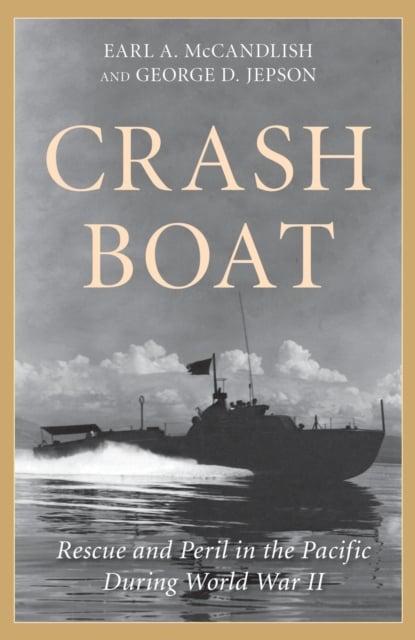Reviewed by Capt. Richard Dick, USN (Ret.)
Crash Boat is a remarkable memoir in several ways. The story of an Army Air Forces (AAF) 63-foot crash boat, P-399 Sea Horse (an unofficial nickname), in the Pacific during the latter half of World War II, it was written in a cooperative effort between the skipper, Earl McCandlish, and the son of his chief mate, MSGT George L. Jepson. The authors’ crisp style, eye for color and detail, and sense of common humanity make the book a pleasure to read and highlight an aspect of the war—inshore air-sea rescue in the Pacific—about which little has been published.
McCandlish narrates the book from his initial assignment to crash boat training in Spring, 1943 in New Orleans through his command of Sea Horse in the South Pacific to the transfer of the boat to the Philippine government at the war’s end. Along the way, he takes some brief excursions that add color to the narrative, including his prewar summer job helping to locate Benedict Arnold’s sunken gunboat Philadelphia off Valcour Island and his postwar meeting with Eleanor Roosevelt. He describes the boat’s specifications and performance well enough for the reader to understand the narrative, but the book does not pretend to be a technical handbook on 63-foot rescue boats. Modelers and other readers interested in more technical data and references should consult the website uscrashboats.org. McCandlish’s main focus is people (especially his crew) their adventures, successes, and mistakes. A skilled storyteller, he takes the reader through rescues under fire, special operations, interactions with Polynesian and Melanesian islanders, and a few near-fatal collisions with his own chain of command.
Sea Horse and its crew started their operational career in the Solomons, covering flights deploying from Australia up the island chain. McCandlish describes the crew’s extensive interactions with the islanders with respect and genuine affection. He then describes his surprisingly bleak but brief operations under British control and the boat’s transition to a more active shooting war in the Philippines as Allied forces invaded the archipelago. One highlight is his vivid picture of the attempted rescue of an Australian Kittyhawk pilot on Halamahera that earned a mix of Silver and Bronze Stars for the entire crew. McCandlish discusses the crew’s support of Filipino resistance groups and concludes with the end of the war and the crew’s journeys home.
As previously discussed, Crash Boat is not a very helpful resource for modelers or those interested in tactical histories. However, as a vivid, factual, and very human narrative of a little-known aspect of World War II, it is hard to beat.
Earl A. McCandlish joined the Army in 1942 and was assigned to the Army Air Forces soon after. It is pleasing to think that McCandlish’s pre-war experience with small craft led to his assignment to the AAF’s growing air-sea rescue service, but those familiar with the apparent randomness of assignments in wartime might be tempted to attribute it to fortunate coincidence. In any case, after training, McCandlish assumed command of the P-399. George D. Jepson, a publishing executive experienced in maritime publications, co-authored Crash Boat and published the book after McCandlish’s death in 2000.
Captain Dick is a retired submariner and also served for over 29 years in the defense intelligence community.
Crash Boat. By Earl A. McCandlish and George D. Jepson. (Guilford, CT: Lyons Press, 2021).


